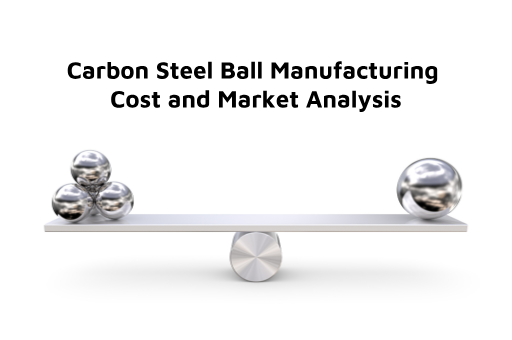
 Home > News
Home > NewsCarbon steel balls are integral components in various industries, including automotive, aerospace, and industrial machinery, due to their durability, hardness, and cost-effectiveness. The manufacturing cost of carbon steel balls and their market dynamics are influenced by several factors, including raw material prices, labor costs, production techniques, and global market demand.

Raw Materials:
The primary cost driver in carbon steel ball manufacturing is the price of steel. The cost of carbon steel can fluctuate based on global supply and demand, tariffs, and geopolitical events. Generally, steel accounts for about 50-70% of the total production cost of carbon steel balls.
Production Process:
Forming: The production process begins with the cutting of steel wire or rod into smaller pieces, which are then formed into rough ball shapes using mechanical or hydraulic presses. The cost of energy and the wear and tear on machinery are significant contributors to the overall cost.
Grinding and Lapping: The rough balls are then ground and lapped to achieve the desired size and surface finish. This process is labor-intensive and requires precision equipment, leading to high operational costs.
Heat Treatment: Heat treatment is crucial to achieving the necessary hardness and durability of the balls. The energy consumption during this phase, along with the cost of specialized furnaces, contributes to the manufacturing cost.
Surface Treatment: To improve corrosion resistance and surface hardness, carbon steel balls undergo various surface treatments. This step adds to the material and labor costs.
Labor Costs:
Labor costs vary significantly depending on the region of production. In countries with lower labor costs, manufacturers can produce carbon steel balls at a more competitive price. However, in regions with higher labor costs, automation and efficiency improvements are critical to maintaining profitability.
Overheads:
Overhead costs include factory maintenance, administration, and logistics. Efficient management of these costs is essential to keep the final product price competitive.
Global Demand:
The global demand for carbon steel balls is driven by the automotive, aerospace, industrial machinery, and consumer goods sectors. As these industries continue to expand, especially in emerging markets, the demand for carbon steel balls is expected to grow.
Regional Insights:
Asia-Pacific: This region dominates the carbon steel ball market due to the presence of large-scale manufacturing industries, low production costs, and rapidly growing industrial sectors in countries like China and India.
North America and Europe: These regions have a well-established market with a focus on high-quality products. The demand here is driven by the automotive and aerospace industries, which require precision-engineered carbon steel balls.
Middle East and Africa: The market in these regions is growing due to increasing industrialization and investments in infrastructure projects.
Pricing Trends:
The price of carbon steel balls is influenced by raw material costs, technological advancements, and market competition. Over the past few years, prices have been relatively stable, but fluctuations in steel prices can lead to changes in the final product price.
Competitive Landscape:
The carbon steel ball market is highly competitive, with numerous players offering a wide range of products. Key players focus on improving production efficiency, enhancing product quality, and expanding their global footprint to maintain a competitive edge.
The manufacturing cost of carbon steel balls is significantly influenced by raw material prices, production processes, and labor costs. As the global demand for these components continues to rise, manufacturers must focus on optimizing their production processes and managing costs effectively to remain competitive in the market. Regional variations in demand and pricing trends offer both challenges and opportunities for industry players looking to expand their market presence.
View More(Total0)Comment Lists